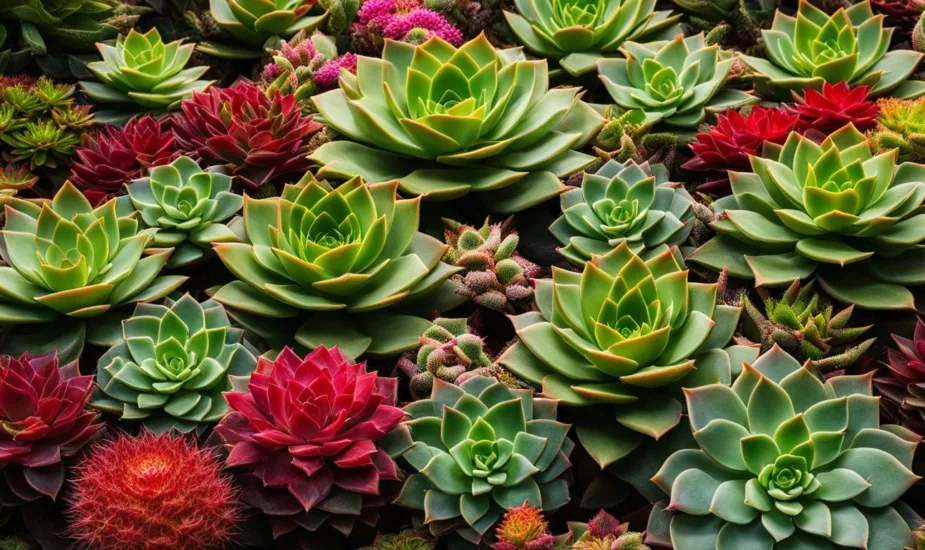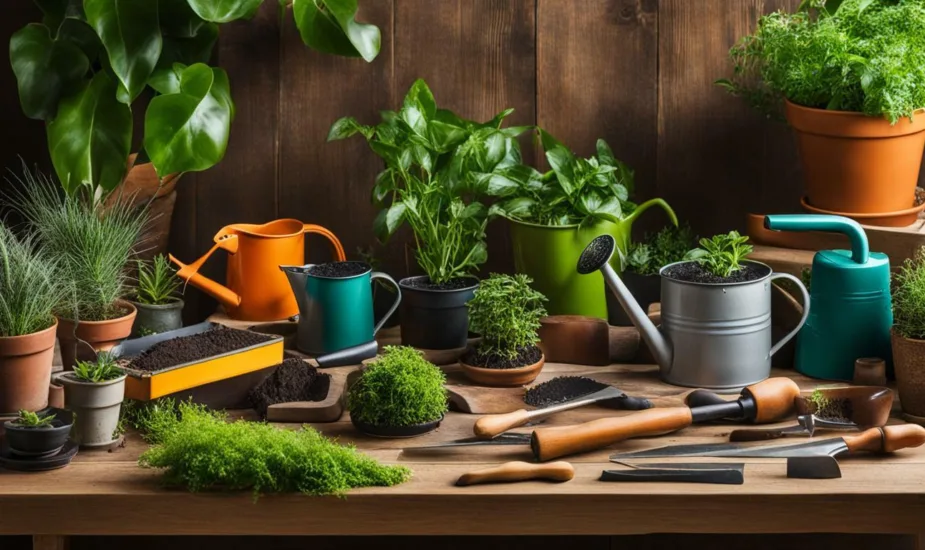Best Tomato Companion Plants for Your Garden
As a passionate gardener, I always strive to create a thriving and productive environment for my plants. One of my all-time favorite vegetables to grow is tomatoes.

There’s just something special about plucking a fresh, juicy tomato straight from the vine and savoring its delicious flavor. But over the years, I’ve learned that tomatoes can be a bit finicky. They can face issues like pests, diseases, and low production. However, there is a secret weapon that can help tomatoes overcome these challenges and flourish: companion plants.
Companion planting is the practice of growing specific plants together to create a mutually beneficial relationship. By strategically choosing the right companion plants, you can attract pollinators, repel garden pests, prevent diseases, enhance flavor, and maximize yield in your tomato garden. That’s why I’m excited to share with you the best tomato companion plants that I have discovered through my own gardening journey.
Key Takeaways:
- Companion planting with tomatoes can help attract pollinators and beneficial insects.
- Certain companion plants have natural pest-repelling properties, reducing the need for chemical pesticides.
- Companion plants can prevent diseases in tomatoes and improve their overall health.
- Flowers, herbs, and vegetables can all be great tomato companions.
- Basil is a standout companion plant that enhances both the taste and growth of tomatoes.
The Benefits of Companion Planting with Tomatoes
Companion planting with tomatoes provides numerous advantages for your garden. By growing certain companion plants alongside tomatoes, you can create a harmonious environment that promotes the growth and productivity of your tomato plants. Let’s explore the benefits of companion planting with tomatoes in more detail.
Attracting Pollinators and Beneficial Insects
One of the key benefits of companion planting with tomatoes is the attraction of pollinators and beneficial insects. Bees and ladybugs, for example, play a crucial role in pollinating tomato flowers, which is essential for fruit development. By incorporating companion plants that attract these pollinators, such as flowers like marigolds and herbs like basil, you can ensure a bountiful harvest of tomatoes. The presence of beneficial insects like ladybugs can also help control pests like aphids, naturally maintaining a balanced ecosystem in your tomato garden.
Repelling Garden Pests Naturally
Companion plants have the ability to naturally repel garden pests, reducing the need for chemical pesticides. This is another advantage of companion planting with tomatoes. Certain plants, such as marigolds and onions, have natural repelling properties that can deter pests like hornworms, aphids, and whiteflies. By interplanting these companion plants with your tomatoes, you can create a barrier against common garden pests, minimizing damage to your tomato plants and preserving their health.
Preventing Diseases and Boosting Tomato Health
Companion plants can also help prevent diseases in tomatoes and boost their overall health. Some companion plants, like garlic and chives, act as natural fungicides, protecting tomato plants from fungal diseases. These plants release compounds that inhibit the growth of fungi, helping to keep your tomatoes healthy and disease-free. Additionally, certain companion plants have beneficial properties that enhance the vigor and resilience of tomato plants, promoting their overall well-being and productivity.
Tomato Companion Plants: Flowers, Herbs, and Vegetables

When it comes to growing tomatoes, companion plants can play a crucial role in enhancing their growth and overall health. By strategically choosing the right flowers, herbs, and vegetables, you can create a thriving ecosystem in your tomato garden.
One popular companion plant for tomatoes is marigolds. These vibrant flowers not only add visual appeal to your garden but also help in repelling insects like tomato hornworms and aphids. Their strong scent acts as a natural deterrent, keeping pests away from your tomato plants.
Garlic and onions are also excellent choices for companion planting with tomatoes. These pungent bulbs have natural pest-repelling properties, making them effective in keeping common tomato pests at bay.
Another beneficial companion plant is lavender. Not only does lavender add beauty and fragrance to your garden, but it also attracts pollinators like bees, ensuring better pollination of your tomato flowers. Additionally, the strong scent of lavender repels mosquitoes and aphids, further protecting your tomato plants.
Basil is a favorite herb that not only complements the flavor of tomatoes but also promotes their growth. It releases natural oils that repel common pests like aphids and spider mites. Planting basil alongside tomatoes can enhance their taste and yield.
In addition to flowers and herbs, certain vegetables can also be excellent tomato companions. Chives, asparagus, celery, parsley, and peppers are known to have beneficial properties when grown alongside tomatoes. They can contribute to the overall health and productivity of your tomato plants, creating a diverse and thriving garden.
Maximizing Flavor and Yield in Your Tomato Garden

Companion plants can play a significant role in maximizing the flavor and yield of your tomatoes. One such companion plant is basil, which not only enhances the taste of tomatoes but also promotes their growth. The natural oils in basil leaves repel pests like aphids and spider mites, and the distinctive smell of basil can also deter mosquitoes.
Additionally, the choice of herb varieties in tomato cultivation can have a major impact on flavor. Certain herbs like oregano, thyme, and rosemary complement the flavor of tomatoes and can be harvested alongside them for culinary purposes. By carefully selecting companion plants and herb varieties, you can create a flavorful and bountiful tomato garden.
How Basil Enhances Both Taste and Growth
Basil is a popular herb that pairs exceptionally well with tomatoes. When planted alongside tomatoes, basil not only adds a delightful flavor to your harvest but also supports the growth of the tomato plants.
The aromatic compounds present in basil, such as linalool and eugenol, repel common pests that can damage tomatoes, such as aphids and spider mites. This natural pest repellent property of basil helps to keep your tomato plants healthy and thriving. Additionally, the strong aroma of basil acts as a natural deterrent for mosquitoes, keeping them away from your garden.
Furthermore, the intercropping of basil and tomatoes can enhance the flavor of both plants. The combination of the sweet and tangy taste of tomatoes with the fresh and aromatic flavor of basil creates a harmonious culinary experience. Whether used in salads, sauces, or other tomato-based dishes, the addition of basil elevates the overall taste profile.
The Importance of Herb Varieties in Tomato Cultivation
When it comes to tomato cultivation, the choice of herb varieties can make a significant difference in the flavor of your harvest. Certain herbs have distinct flavors that complement the taste of tomatoes, enhancing their overall appeal.
Oregano, with its robust and slightly peppery flavor, adds depth to tomato-based dishes and sauces. Thyme, with its earthy and aromatic notes, pairs well with the sweetness of tomatoes, enhancing their savory profile. Rosemary, with its pine-like aroma, adds a touch of complexity to tomato dishes, creating a well-rounded flavor profile.
By incorporating these herb varieties into your tomato garden, you can create a diverse range of flavors that elevate the culinary experience. Harvesting these herbs alongside your tomatoes allows you to enjoy the convenience of having fresh ingredients readily available in your backyard.
| Herb | Flavor Profile | Complementary Pairings |
|---|---|---|
| Oregano | Robust, slightly peppery | Tomato-based dishes, sauces |
| Thyme | Earthy, aromatic | Sweet tomatoes, savory dishes |
| Rosemary | Pine-like aroma | Tomato dishes, roasted vegetables |
Potential Pitfalls: Plants to Avoid Near Tomatoes

While companion planting offers many benefits for tomatoes, it’s important to be aware of certain plants that should be avoided when planting them near tomatoes. These plants can have negative effects on the growth and health of tomatoes, impacting their productivity. Two groups of plants that should be avoided as companions for tomatoes are the cabbage family and the nightshade family.
Negative Effects of Planting Cabbage Family Near Tomatoes
The cabbage family, which includes broccoli, Brussels sprouts, cabbage, cauliflower, collards, and kale, can have detrimental effects on tomatoes when planted in close proximity. These plants are related to tomatoes and have similar nutrient requirements. When planted together, they can compete for the available nutrients in the soil, leading to stunted growth and reduced productivity for both the tomatoes and the cabbage family plants. It’s best to keep these plants separate to ensure optimal growth and yield for each.
The Risk of Disease With Nightshade Family Co-Planting
The nightshade family, which includes eggplants, peppers, and potatoes, should also be avoided as companion plants for tomatoes. These plants belong to the same botanical family as tomatoes and are susceptible to similar diseases, such as early blight and late blight. Co-planting them increases the risk of these diseases spreading between the plants, causing widespread damage and reduced harvests. It’s essential to maintain distance between tomatoes and other nightshade family plants to minimize the risk of disease.
By being mindful of these potential pitfalls and avoiding planting the cabbage family and the nightshade family near tomatoes, you can ensure the health and productivity of your tomato plants. Plan your companion planting strategies carefully, choosing compatible plants that will enhance the growth, flavor, and yield of your tomatoes without causing any adverse effects.
| Plants to Avoid | Negative Effects |
|---|---|
| Broccoli | Stunts tomato growth, competes for nutrients |
| Brussels sprouts | Stunts tomato growth, competes for nutrients |
| Cabbage | Stunts tomato growth, competes for nutrients |
| Cauliflower | Stunts tomato growth, competes for nutrients |
| Collards | Stunts tomato growth, competes for nutrients |
| Kale | Stunts tomato growth, competes for nutrients |
| Eggplants | Risk of disease transmission (early blight, late blight) |
| Peppers | Risk of disease transmission (early blight, late blight) |
| Potatoes | Risk of disease transmission (early blight, late blight) |
Conclusion
In conclusion, companion planting with tomatoes offers a multitude of benefits for your garden. By strategically selecting compatible companion plants, you can create a harmonious ecosystem that attracts pollinators, repels pests, prevents diseases, and maximizes the flavor and yield of your tomato plants.
When choosing companion plants, consider marigolds to repel insects, garlic and onions to naturally deter pests, and lavender to attract beneficial bees and repel mosquitoes and aphids. Basil is an excellent companion plant that enhances the taste of tomatoes and promotes their growth.
It is important to be aware of potential pitfalls and avoid planting tomatoes near the cabbage family or nightshade family. These plants can compete for nutrients or introduce diseases that can harm your tomatoes.
Experiment with different companion plants and herb varieties to find the combinations that work best for your garden. Provide the optimal growing conditions and maintain a balanced ecosystem to ensure the success of your tomato plants. With the right companion plants by their side, your tomatoes will flourish and reward you with a bountiful harvest.
FAQ
What are companion plants for tomatoes?
Companion plants for tomatoes are specific plants that are grown alongside tomatoes in order to create a mutually beneficial relationship. These plants can attract pollinators, repel pests, prevent diseases, enhance flavor, and maximize yield in your tomato garden.
What are the benefits of companion planting with tomatoes?
Companion planting with tomatoes offers several benefits. It can attract pollinators and beneficial insects, repel garden pests naturally, prevent diseases, and boost the overall health of your tomatoes.
Can companion plants attract pollinators to my tomato garden?
Yes, certain companion plants can attract pollinators like bees and ladybugs, which are essential for pollinating tomato flowers and increasing fruit production in your tomato garden.
How can companion plants repel garden pests naturally?
Some companion plants, like marigolds, garlic, and onions, have natural repelling properties that can deter pests like tomato hornworms, aphids, and whiteflies, reducing the need for chemical pesticides in your garden.
Can companion plants prevent diseases in tomatoes?
Yes, certain companion plants have natural fungicidal properties that can help prevent diseases in tomatoes. They can also improve the overall health of the tomato plants, making them more resistant to diseases.
What are some common tomato companion plants?
Some common tomato companion plants include marigolds, garlic, onions, lavender, basil, chives, asparagus, celery, parsley, and peppers. These plants provide various benefits like pest repellence, disease prevention, and flavor enhancement when grown alongside tomatoes.
How does basil enhance the taste and growth of tomatoes?
Basil not only enhances the taste of tomatoes but also promotes their growth. The natural oils in basil leaves repel pests like aphids and spider mites, and the distinct aroma of basil can also deter mosquitoes.
Are there certain herb varieties that complement the flavor of tomatoes?
Yes, certain herbs like oregano, thyme, and rosemary complement the flavor of tomatoes and can be harvested alongside them for culinary purposes.
What plants should I avoid planting near tomatoes?
Plants from the cabbage family, such as broccoli, Brussels sprouts, cabbage, cauliflower, collards, and kale, should be avoided as they can negatively affect the growth of tomatoes. Additionally, plants from the nightshade family like eggplants, peppers, and potatoes should also be avoided due to the risk of disease transmission.
How can I create a thriving tomato garden with companion plants?
By carefully selecting companion plants that provide the desired benefits, avoiding harmful plant combinations, and maintaining optimal growing conditions, you can create a thriving and productive tomato garden for bountiful harvests.
 Little Garden Tips
Little Garden Tips












